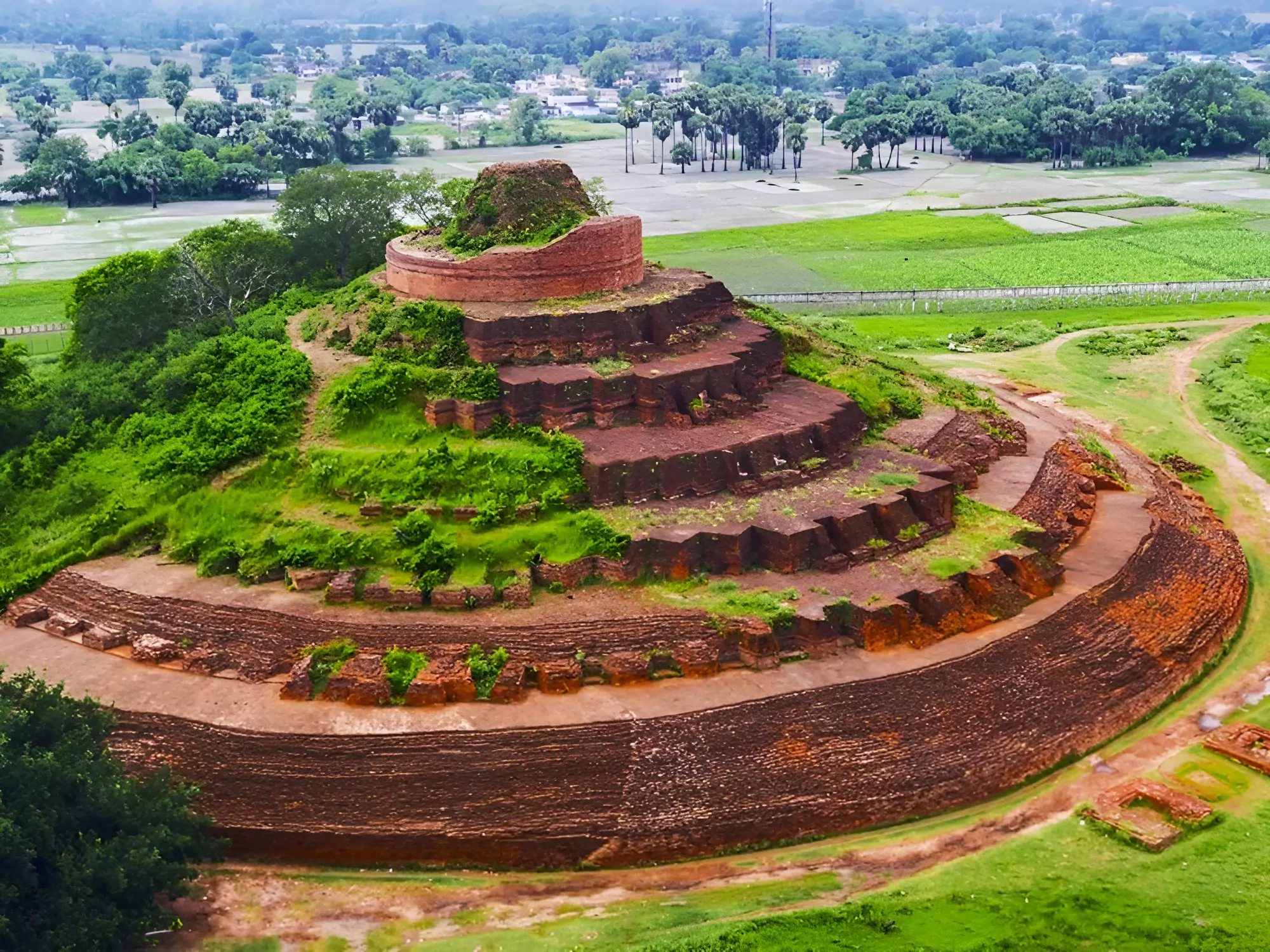Context
Recently, the Bihar government took an initiative to promote the Kesariya Stupa, as a major tourist attraction worldwide.
About Kesariya Stupa
The Kesariya Stupa is a significant Buddhist monument. It is also a pilgrimage site for Buddhists worldwide.
- Location: Kesariya village, Patna, Bihar
- Significance:
- It’s known for being the largest and tallest Buddhist stupa in the world.

About Stupa:
- Stupa is a burial mound made of dirt and stones.
- It often keeps religious relics and sacred items of Buddha.
- This spot is used for meditation too.
- Types of Stupas
- The Relic stupa: It contains remains of Buddha and its disciples
- The object stupa: It contains belongings of Buddha and its disciples
- The commemorative stupa: This Stupa marks events in Buddha’s life.
- The symbolic stupa: It represents the teachings of Buddhism.
- The votive stupa: This stupa was erected on relics for dedication.
|
-
- The Kesariya Stupa is a testament to India’s rich culture and religion.
- It is a symbol of Buddhism, its values, and teachings.
- Construction Period: This Stupa was Built in the 3rd century BCE under the Mauryan Empire by the legendary emperor Ashoka.
- Construction Belief: The stupa was constructed to commemorate the spot where Lord Buddha delivered his 22nd sermon and also to mark the place where he announced his impending death.
Enroll now for UPSC Online Course
Discovery of Kesariya Stupa in British Era:
- Colonel Colin Mackenzie’s Visit: Colonel Colin Mackenzie, who later became India’s first surveyor-general, visited Kesariya Stupa in 1814.
- Excavation by Alexander Cunningham: Alexander Cunningham, the first head of the Archaeological Survey of India (ASI), conducted a small-scale excavation near the site in 1861.
- ASI Excavation: The ASI excavated significantly at Kesariya Stupa in 1998.
Features of Kesariya Stupa:
- Impressive Height: This Stupa is 104 feet tall, making it the world’s tallest Buddhist monument.
- It is of a circular base with a diameter of 123 metres.
- Circular Design: Built in a circular shape using bricks, mud, and lime mortar.
- Outer Surface: Covered with white plaster, enhancing its visual appeal.
Architectural Features of Kesariya Stupa:
- Dome and Chamber: The Kesariya Stupa has a solid hemispherical dome with a small chamber.
- It is believed to have held relics of Lord Buddha.
- Harmika: It is Crowned by an umbrella-like structure called Harmika.
- The crown is adorned with intricate stone carvings.
- Terrace: The stupa has six terraces or layers with small rooms for Buddha statues.
- On the top of the structure, there is a huge cylindrical drum.
- Balustrade and Gateways: The stupa is enclosed by a balustrade with four gateways.
- These gateways are decorated with carvings of Buddha’s life scenes.
- Helical Staircase: In Stupa, there is a helical staircase that leads to the top of the stupa.
- The staircase has 80 steps, and is thought to have been utilized by monks for circling around the stupa.
Miniature Replicas of Bihar’s Iconic Tourist Attractions Surrounding Kesariya Stupa
Eight smaller replicas of famous tourist attractions will encircle the Kesariya Stupa. These tourist points are the Mahabodhi Temple, ancient Nalanda and Vikramshila universities, Ashokan Pillar of Vaishali, Vikramshila University, Barabar Caves, Sujata Stupa, Gurpa Hills Buddhist site, and the Vishva Shanti Stupa.
![]() 19 Apr 2024
19 Apr 2024
